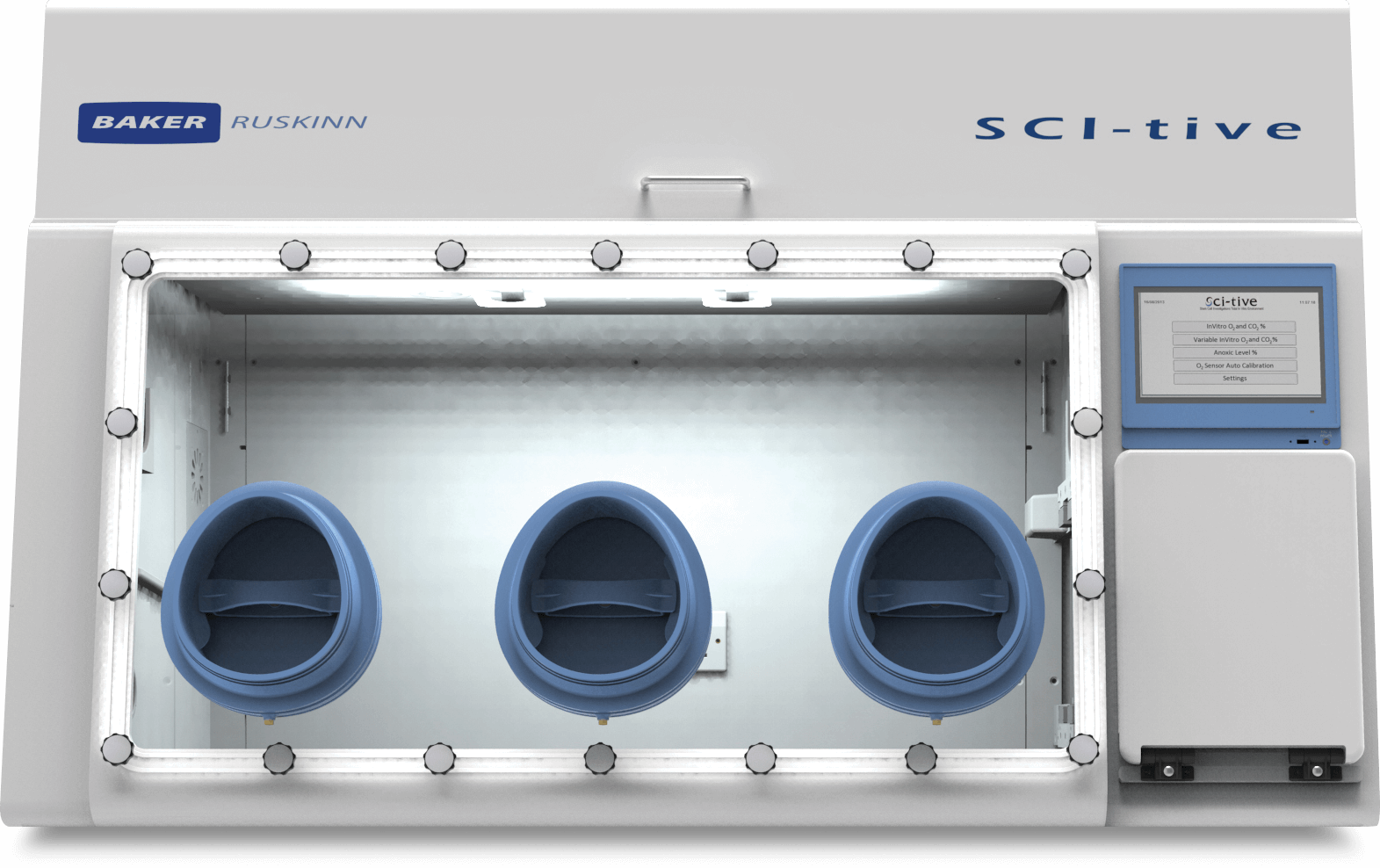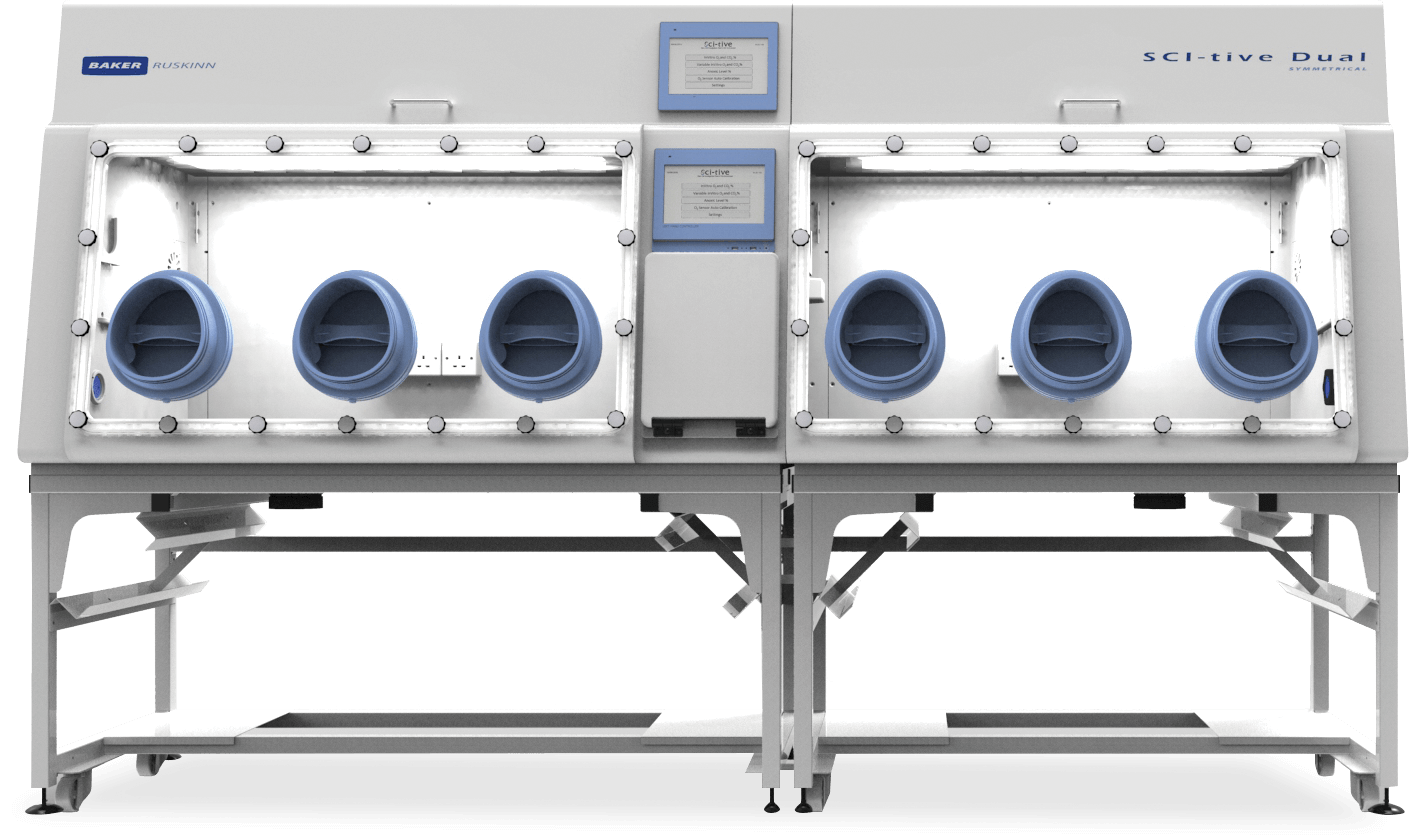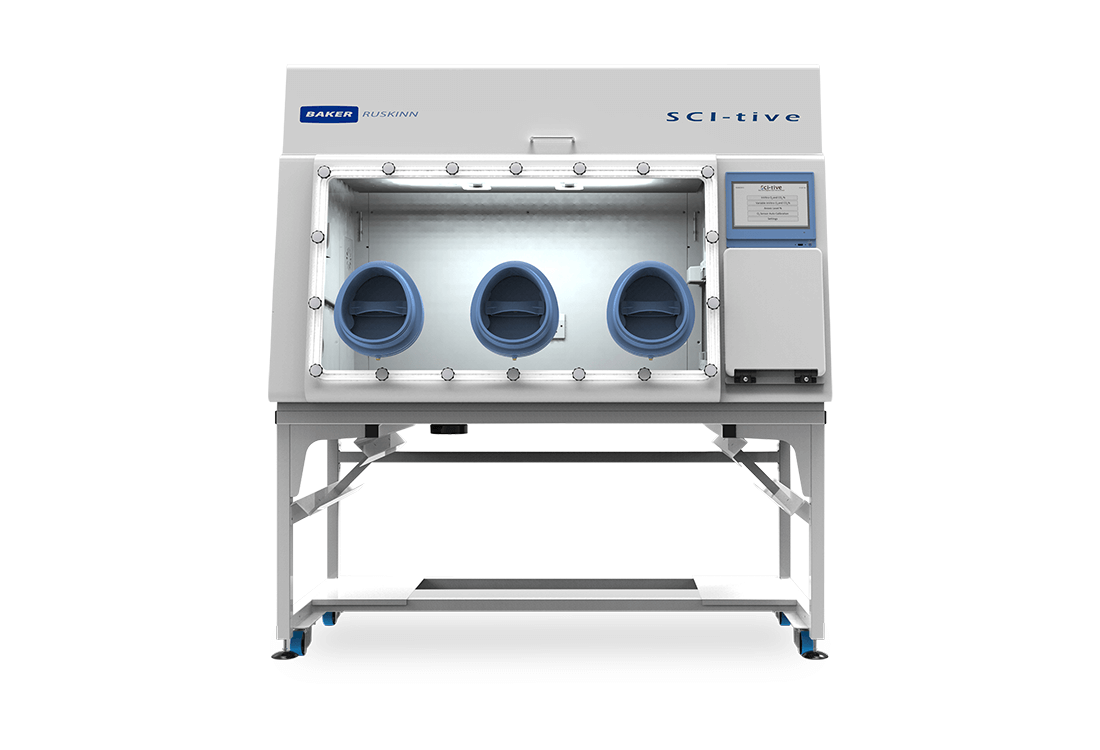SCI-tive – Hypoxia / Physoxia Workstation
Physiological oxygen workstations for cell therapy and stem cell research
The Baker Ruskinn SCI-tive hypoxia workstations provide accurate environmental control for the growth and analysis of mammalian cells under physiologically relevant conditions. These ‘Lab in a Box’ hypoxia workstations provide maximum flexibility and workspace for cell culture under physiological oxygen levels
Precision Control
Optimal growth conditions with sophisticated control of humidity, temperature and oxygen levels. Heating and adjustable oxygen in the interlock
Instrument Flexibility
Large internal workspace allows researchers to work with a range of imaging sytems and analytical instruments under controlled environmental conditions
Standard HEPA Filtration
Minimise the risk of contamination
Easy Access
Fast transfer of samples and direct hand access without compromising the chamber environment or stressing your cells
Customisable
Configure the SCI-tive to meet your exact needs, whether you are in research or cell therapy. Image using microscopes with oculars without compromising the chamber environment
Assay Flexibility
Designed to give the ultimate long term stable control for complex cellular studies and manipulations
£0.00
Instrument Control – Built-in colour touchscreen
External Dimensions (W x D x H)in mm – 1660 x 826 x1077 (single configuration)
Interlock Capacity (T75 flasks) – 15 x T75 flasks
Workstation Usable Capacity (litres) – 420l- SCI-tive single
Customisable – Fits into your experimental workflow
Standard HEPA filtration – Reduce the risk of contamination
Touchcreen interface – At a glance monitoring
1.1 m internal width – Space for microscopes and cellular analysis instruments
Flexible – Single, dual or quad configurations available
Standard Specification Includes
- Ezeeyin glove ports for direct hand access
- 420 litre usable capacity
- 11.3 litre interlock with temperature and oxygen control
- Internal HEPA filtration
- Touchscreen control interface
- Humidity control using Aquasorb
- 3 internal power sockets
- RT +5 up to 45 degrees C temperature control
- One touch oxygen sensor calibration
- Pre-programmed cycling
- Optical oxygen sensor with 4 year lifetime
- Lighting with on, off and dimming
- Removeable front panel for instrument installation and cleaning
- One narrow and one wide culture rack
- Vacuum and gas ports
- Multi-cable gland
- CondoCell cell transport device
- Immunological Effects of Phd2 Silencing and Systemic Hypoxia in the Mouse. Presented by Prof. Chris Pugh, Oxford University
- Transcription factors and their interplay with oxygen – why strict control with hypoxia workstations makes the difference. Presented by Dr. Michelle Lickrish, Labtech UK & Dr. Krista Rantanen, Director of Scientific Applications, Baker Ruskinn.
- O2 as a signalling molecule, lessons from chromatin analysis to transcriptional pathways. Presented by Prof. Sonia Rocha, University of Liverpool
- Oxygen-dependent control of T-cell mediated immunity. Presented by Sarah Ross Ph.D., The Babraham Institute
- Revisiting ‘Dr Ox’ – Physoxia In The Molecular Era. Presented by Prof. Nicholas R. Forsyth, Keele University
- Defining physiological normoxia for improved translation of cell physiology to animal models and humans: Presented by Prof Giovanni E. Mann, King’s College London
- The importance of oxygen in cellular physiology: the story of Sir Peter Ratcliffe’s 2019 Nobel Prize for Physiology or Medicine, introduced by Krista Rantanen Ph.D.







